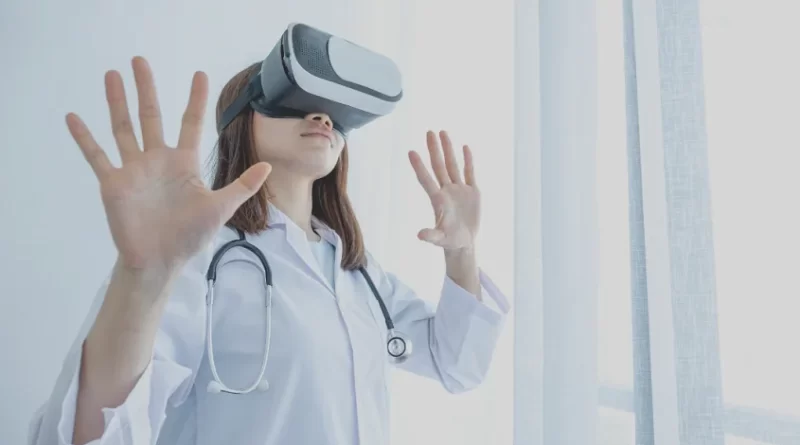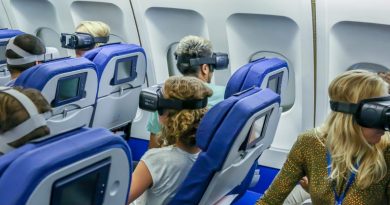The Transformative Potential of Virtual Reality Healthcare Clinics
Virtual reality healthcare clinics are revolutionizing the healthcare industry, offering transformative potential for improved patient outcomes and reduced stress for healthcare practitioners. This article explores the emerging technology of immersive healthcare, its key components, and the various use cases where VR is making a significant impact.
Virtual reality (VR) healthcare clinics are revolutionizing the healthcare industry, offering the transformative potential for improved patient outcomes and reduced stress for healthcare practitioners. This article explores the emerging technology of immersive healthcare, its key components, and the various use cases where VR is making a significant impact. As the global digital healthcare market continues to grow, healthcare professionals are harnessing VR to provide state-of-the-art immersive therapies and address the biggest challenges in patient care. This article will delve into the practical applications, benefits, and success stories of VR healthcare clinics.
Immersive Healthcare as an Emerging Technology
Virtual Reality (VR) solutions have emerged as a powerful tool in healthcare, allowing healthcare professionals to engage patients with bespoke, simulated environments for medical education and treatment. This technology has the potential to revolutionize the healthcare industry by addressing challenges and improving patient care. VR solutions can be utilized in various use cases, including surgery practice, pain management, and rehabilitation. Let’s explore the key components that drive the success of virtual reality healthcare clinics.
VR Hardware
Virtual reality healthcare clinics rely on specialized hardware to provide immersive experiences. Medical practitioners and patients use VR headsets, controllers, trackers, and other hardware solutions to interface with real and immersive environments. These devices can be tailored to medical use cases, offering precise degrees of freedom (3DoF/6DoF), advanced connectivity features like 5G and WiFi 6, and other specifications. The hardware plays a crucial role in creating a seamless and realistic virtual environment for medical professionals and patients.
Virtual Healthcare Scenes
One of the significant advantages of VR healthcare clinics is the ability to create immersive environments for patient treatment. Medical professionals can train in virtual operating theaters, and rehabilitation gaming rooms, and engage in meditative practices for mental health and wellness. By entering these virtual worlds, doctors and practitioners can gain valuable experience and expertise in a safe and controlled environment.
3D Medical Tools
VR technology goes beyond visual immersion by replicating medical tools in a digital form. These 3D models include surgical tools for training, diagnostic equipment, and other industry-specific objects. Expert designers craft these 3D models with high accuracy to ensure practical use. By utilizing VR-based 3D medical tools, healthcare professionals can enhance their skills, learn new techniques, and improve patient care.
Digital Twins
Digital twins, a concept derived from the field of engineering, allow doctors and patients to study 3D replicas of the human body. These digital replicas provide a complete exploded view of anatomy, enabling a deeper understanding of physiological structures. Digital twins have proven instrumental in increasing engagement among students and providing doctors with a roadmap of a patient’s physiology. This technology enables healthcare professionals to quickly resolve medical issues and deliver more precise and effective treatments.
VR Healthcare Use Cases
While virtual reality (VR) technology is gaining traction in the healthcare industry, several compelling use cases have emerged, showcasing its potential to revolutionize patient care and medical training. In this section, we will explore some notable VR healthcare use cases that demonstrate the practical applications and positive outcomes of immersive therapies. From addressing diverse medical conditions to improving rehabilitation and surgical training, these real-world examples highlight the transformative power of VR in healthcare.
VR Therapies
VR therapies have gained significant attention in the healthcare industry. A major charity in Northampton, England, has successfully implemented VR as a treatment for various conditions, including physiotherapy, speech pathology, complex post-traumatic stress disorder (CPTSD), and dementia. The organization utilizes VR headsets from Meta Quest, Pico, and HTC VIVE to offer immersive therapies, improving patient outcomes and enhancing the overall treatment experience.
Penumbra
Penumbra, a leading supplier of medical VR solutions, focuses on rehabilitating patients using VR technology. By utilizing HTC VIVE headsets, the company tracks patient outcomes and documents progress for healthcare providers. Penumbra’s REAL System leverages immersive VR therapies to enhance memory, concentration, and movement, enabling patients to achieve tangible progress in their rehabilitation journeys.
Hatsumi
Hatsumi, a UK-based solution, provides a safe space for patients with mental health issues to communicate their experiences to doctors and groups. By offering interactive and bespoke VR environments, Hatsumi serves as a creative alternative to traditional one-to-one and group therapy sessions. The solution utilizes emerging technologies such as hand and eye tracking, cognitive-behavioral therapy, patient evaluations, and user journeys to gain a deeper understanding of mental health experiences and improve therapeutic outcomes.
Rocket VR Health
Rocket VR Health recently partnered with Massachusetts General Hospital to introduce a novel VR therapeutic platform for patients recovering from post-hematopoietic cell transplantation (HCT) surgery. By supplying VR solutions, Rocket VR Health aims to improve the quality of life for patients suffering from blood cancers such as leukemia, lymphoma, and myeloma. The immersive VR experience can potentially reduce the typical 28-day hospital stay post-surgery, allowing patients to recover more quickly and combat feelings of isolation during their recovery process.
Rendever VR
Rendever VR focuses on providing immersive health and wellness therapies for elderly patients. Using Meta Quest headsets and their MultiBrush solution, elderly individuals can engage in interactive painting in 3D virtual spaces. This innovative approach helps boost mobility, brain functioning, and social skills among the elderly, promoting an enhanced sense of well-being and quality of life.
Virti
Virti, a global leader in immersive training, offers tailored modules for studying human anatomy and performing surgeries. Surgeons and healthcare professionals can utilize VR to simulate mock surgeries, leading to increased retention rates and preparation for complex procedures. Virtual reality training has also proven valuable for neurosurgeons, allowing them to train remotely before performing intricate surgeries such as separating conjoined twins.
Virtual reality healthcare clinics hold immense potential for transforming patient care and medical education. By leveraging the capabilities of VR technology, healthcare professionals can enhance patient outcomes, provide safer and more immersive training environments, and shape the future of healthcare. The success stories mentioned in this article demonstrate the significant impact VR is making across various healthcare domains, including therapy, rehabilitation, mental health, and surgical training. As the global digital healthcare market continues to expand, the adoption of VR in the healthcare industry is set to grow, offering new possibilities for improving patient care and revolutionizing medical education.




